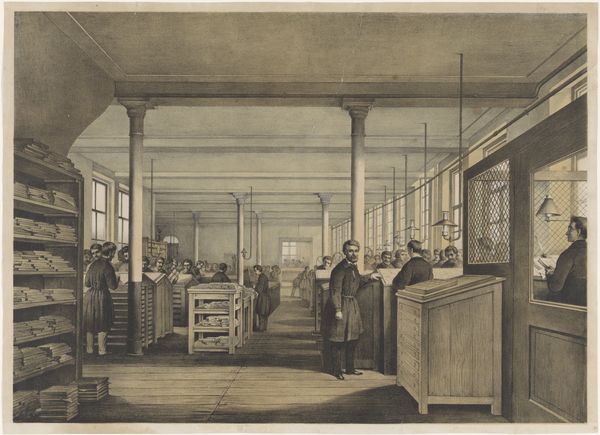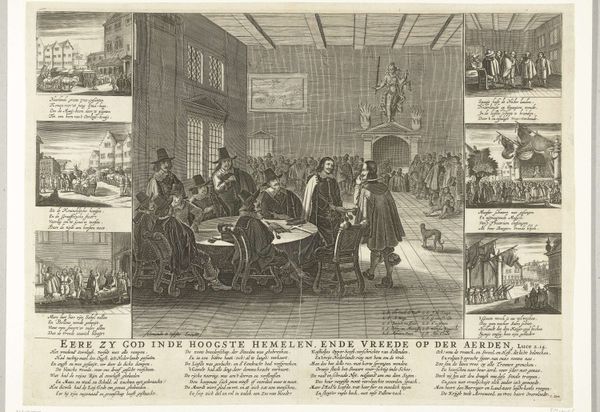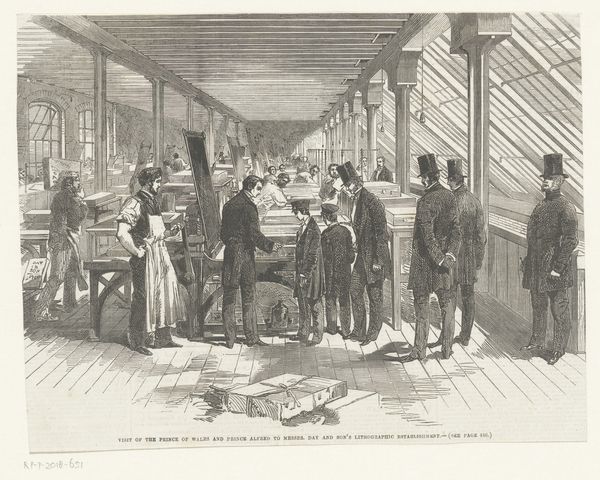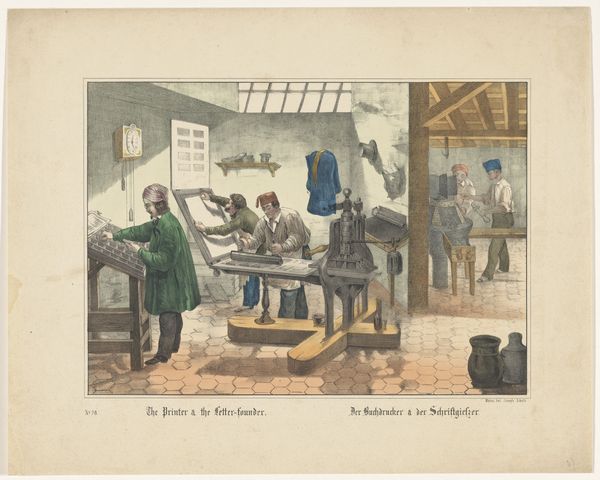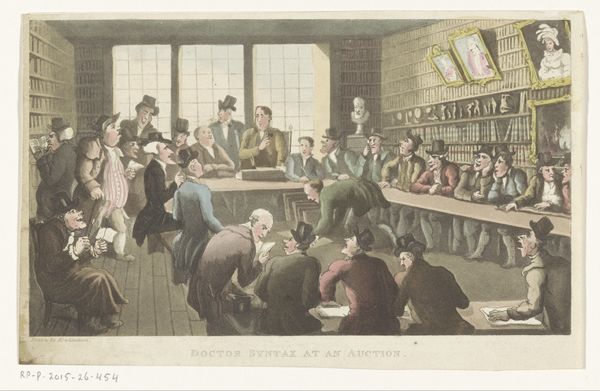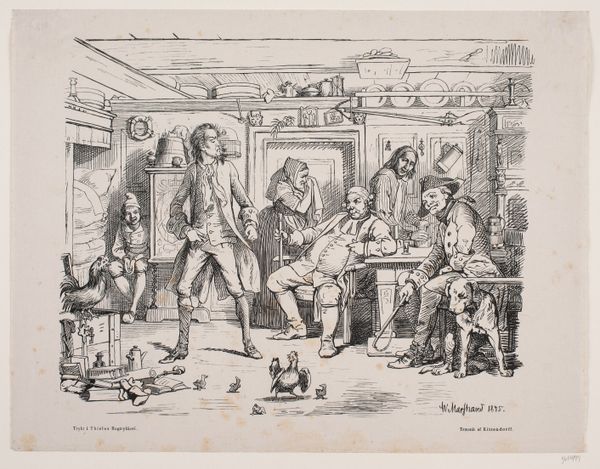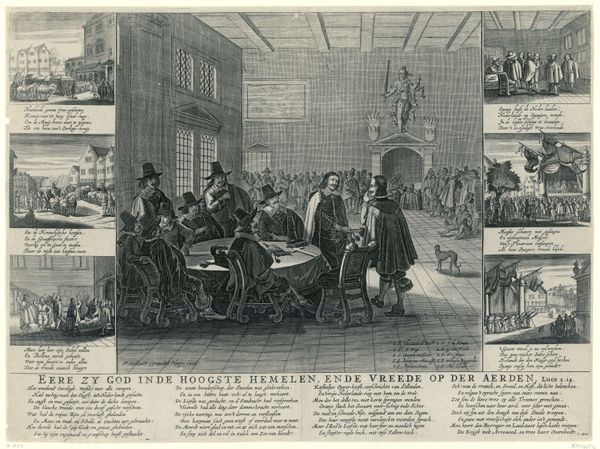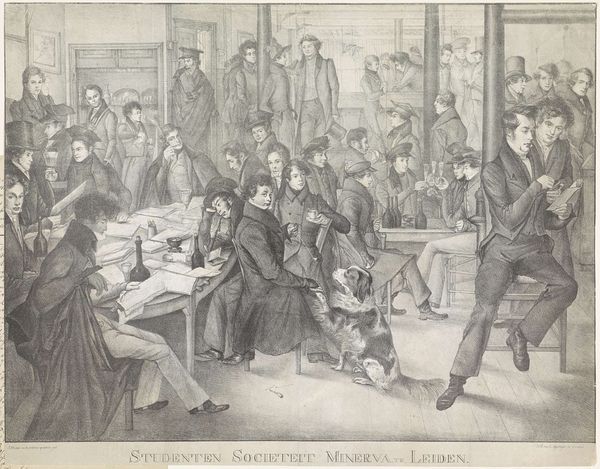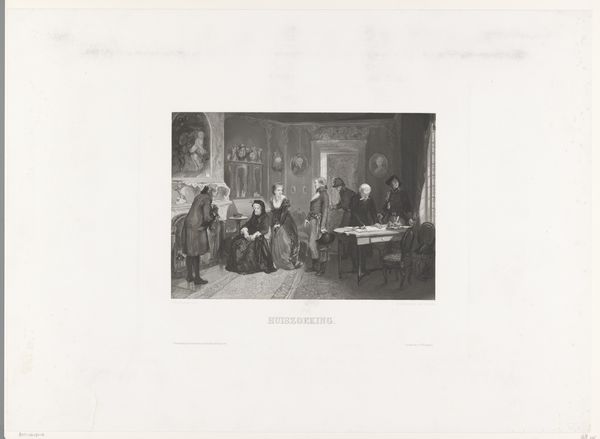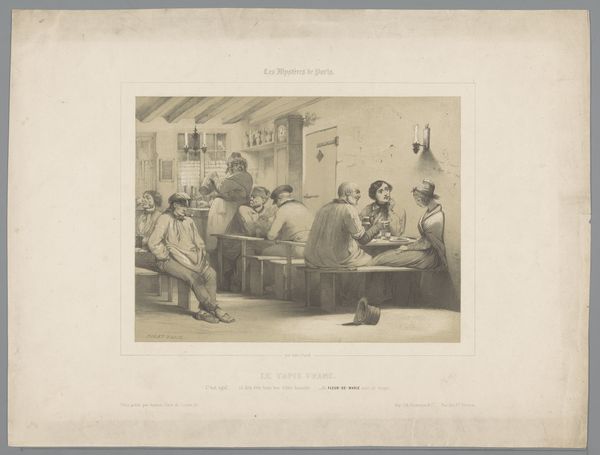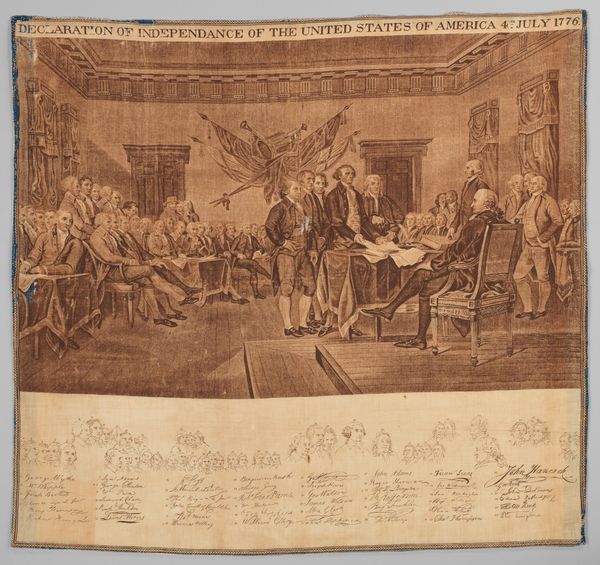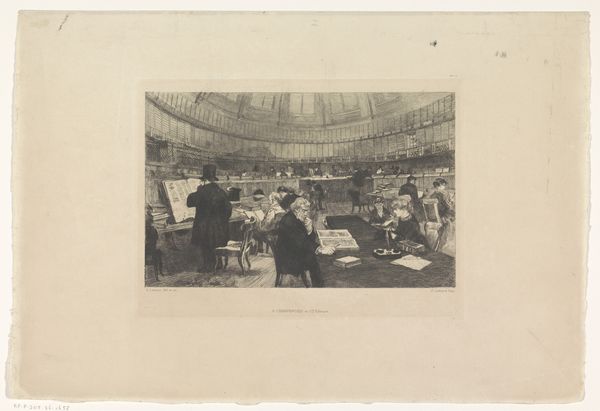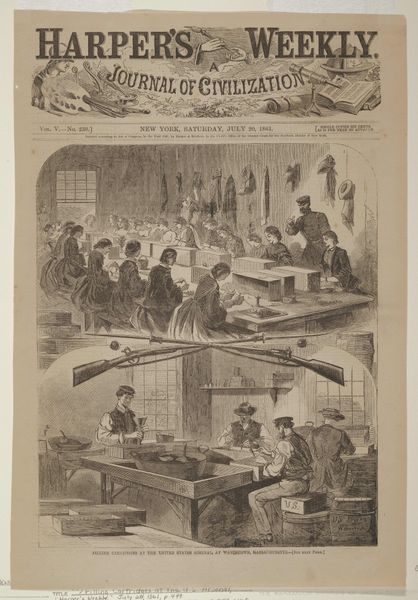
Dimensions: height mm, width mm
Copyright: Rijks Museum: Open Domain
Curator: Looking at this artwork, entitled "Studiezaal van het prentenkabinet te Berlijn," dating back to 1900, one immediately senses a hushed reverence, doesn’t one? Editor: Yes, absolutely! There's an almost theatrical quality to it, a carefully arranged tableau. The print itself—the etching and lithography—lend it a delicate, almost nostalgic feel. I’m interested in the gazes and how they animate the scene, dividing the figures into participants and spectators. Curator: Precisely! I am struck by the contrast in spatial rendering. The foreground features clearly defined, occupied spaces while the figures and architecture in the background begin to blend into one, alluding to an elevated social position with respect to print study. This division contributes to a visual hierarchy. Editor: It does prompt questions about the accessibility of art and knowledge during this period. The setting is a print cabinet, implying an institutional setting. What's most striking, in terms of history, is how print collections were essential educational tools accessible to members of specific social circles and researchers alike. And notice that there are many members from different socio-economic levels: who is included, who is excluded? How does the arrangement of figures around tables shape power relationships and lines of sight? Curator: An intriguing question. Note how the artist carefully distinguishes textures—the smooth papers, the polished wood, the varied fabrics of clothing. The artist’s commitment to depicting reality suggests the image serves more than an aesthetic function. Editor: I'd argue the seemingly objective observation of the space ultimately constructs a narrative. And how these people of different status interact with prints also creates stories about learning, pleasure, or academic dedication. Also, how this scene celebrates intellectual curiosity during the late 19th century—a period deeply engaged with redefining our modern ideas around "knowledge" and the institutions responsible for mediating this idea. Curator: Indeed. Seeing how it marries the fleeting qualities of impressionism with the detail expected of academic art provides further layers to consider regarding aesthetic priorities of the time. I found the foreground so much more interesting, more alive, when first encountering this piece. Editor: For me, knowing how this period helped redefine access to images adds much meaning. The very composition becomes charged with questions about art, knowledge, and power. Curator: An astute reading that balances close looking with pertinent historical considerations. Thank you for sharing your insight! Editor: It has been enlightening, thank you. Reflecting on art within its broader history never fails to give a renewed sense of perspective.
Comments
No comments
Be the first to comment and join the conversation on the ultimate creative platform.
